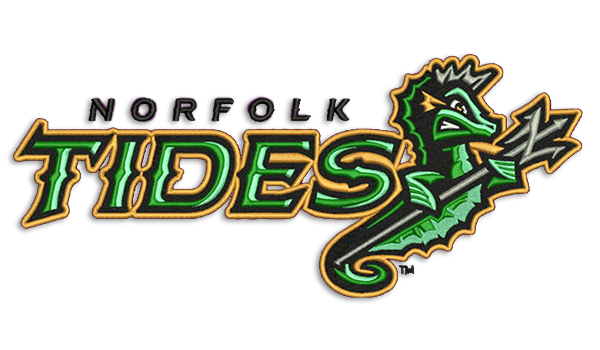Effective Digitizing for Embroidery: Quick Turnaround
Streamlining the Art of Embroidery Digitizing: Step-by-Step Overview
As innovation proceeds to development, the digitization process has actually become extra easily accessible, allowing fanatics to bring their elaborate layouts to life with simplicity. In this overview, we will certainly decipher the intricacies of embroidery digitizing, damaging down each action methodically to streamline the process and encourage both newbies and seasoned embroiderers alike.
Recognizing Embroidery Digitizing Software Program
Needlework digitizing software application functions as a crucial tool for transforming intricate styles right into digital layouts suitable with embroidery devices, facilitating specific stitching and modification. This customized software application permits customers to import different photo documents layouts, such as JPG or PNG, and convert them into needlework machine-readable layouts like DST, EXP, or PES - Digitizing for Embroidery. By utilizing features like stitch modifying, padding options, and thread color choice, digitizing software program enables individuals to manage every facet of the design process
Moreover, advanced needlework digitizing software provides devices for creating complicated designs, readjusting stitch density, and incorporating intricate details. Individuals can likewise preview the style prior to sewing it out, making certain precision and minimizing errors. Additionally, many software application programs supply automated attributes that aid enhance the digitizing procedure, conserving time and initiative.
Understanding the capabilities of needlework digitizing software program is important for achieving top notch cause needlework tasks. By mastering this device, needlework fanatics and experts can unleash their creative thinking and bring detailed styles to life with accuracy and efficiency.

Selecting the Right Design File
After acquainting on your own with the capacities of embroidery digitizing software application, the next essential action in the procedure is picking the appropriate style data for your job. Digitizing for Embroidery. When choosing a design documents for needlework digitizing, it's essential to take into consideration the intricacy of the layout, the size of the end product, and the kind of textile you will certainly be working with
For elaborate styles with fine details, a high-resolution photo or vector file is advised to make certain that the embroidery device can properly replicate the style. Additionally, the dimension of the final item plays a substantial function in selecting the right layout data. Larger layouts might require greater resolution data to preserve quality and intensity.
In addition, the sort of textile you will certainly be stitching on affects the selection of style file. Different fabrics may need changes in the layout documents to make sure that the stitches are properly lined up and the layout looks like planned. By thoroughly choosing the appropriate design data based upon these variables, you can establish on your own up for a successful needlework digitizing procedure.
Digitizing Devices and Techniques
Using specialized software application and accuracy strategies, digitizing tools are crucial in changing detailed designs into embroidery-ready files. Embroidery digitizing software application, such as Wilcom, Hatch, or Embrilliance, supplies the essential platform to convert artwork into stitch information. These programs offer attributes like stitch editing, underlay options, and lettering tools to ensure the design equates effortlessly onto textile.
Among the vital techniques in digitizing is producing a clear course for the needlework machine to follow. This includes digitizing each component of the style with accuracy, establishing stitch kinds, densities, and directions. By using tools like digitizing tablet computers or software-specific plugins, embroiderers can attain a high level of accuracy in their digitized styles.
Moreover, understanding the art of rug stitching is important for generating top quality embroidery. Underlay stitching stabilizes the fabric and produces a structure for the design, making certain that the last product is both aesthetically enticing and durable. By comprehending these digitizing tools and techniques, embroiderers can boost their craft and bring detailed styles to life with precision and effectiveness.
Tailoring Stitch Kinds and Directions
Having developed a structure in digitizing her response tools and techniques, an essential facet ahead of time needlework craftsmanship hinges on personalizing stitch types and instructions with accuracy and objective. The selection of stitch kinds can substantially impact the total look and structure of the embroidered design. Satin stitches, recognized for their smooth and glossy finish, work well for developing boundaries and message. On the various find out here now other hand, fill stitches are perfect for covering larger areas successfully. By strategically combining these stitch types, embroiderers can accomplish deepness and measurement in their layouts.
Additionally, the direction of stitches plays an important duty in boosting the aesthetic charm of the final embroidery. By experimenting with different stitch angles and patterns, embroiderers can bring their layouts to life with amazing detail and ins and out.
Testing and Refining Your Digitized Layout
To make certain the accuracy and quality of your digitized layout, complete testing and refinement are vital steps in the embroidery digitizing process. When you have actually completed the digitization of your layout, it is vital to test it prior to continuing with the actual embroidery. Evaluating enables you to identify any potential issues such as string breaks, sew density problems, or design distortions that might influence the outcome.

After screening, it is essential to fine-tune your digitized style based upon the responses from the test sew-out. This may include tweaking stitch setups, readjusting thickness, or making modifications to the general style to attain the preferred result. By repeating with testing and improvement, you can tweak your digitized design to perfection before progressing with the actual embroidery procedure.
Final Thought
Finally, grasping the art of needlework digitizing requires a complete understanding of the software application, selecting the appropriate style file, making use of digitizing devices and strategies, customizing stitch kinds and directions, and screening and fine-tuning the digitized design. By complying with these steps, embroiderers can streamline the digitizing process and develop top notch embroidered layouts with precision and performance.